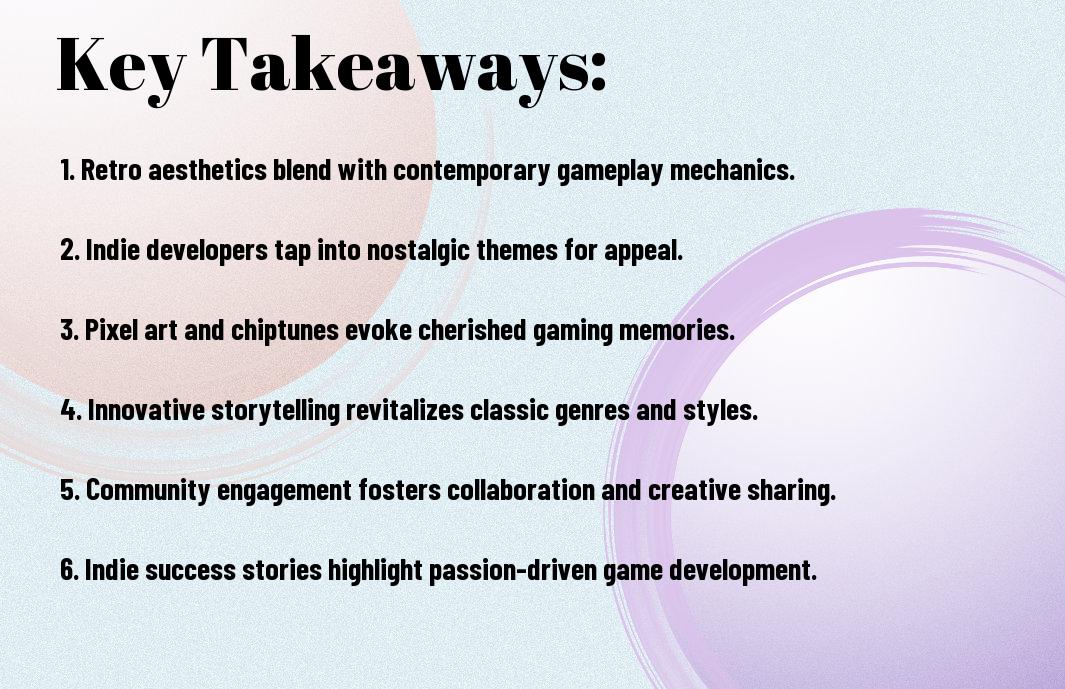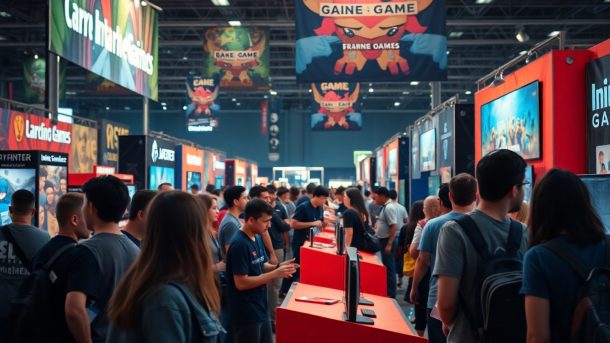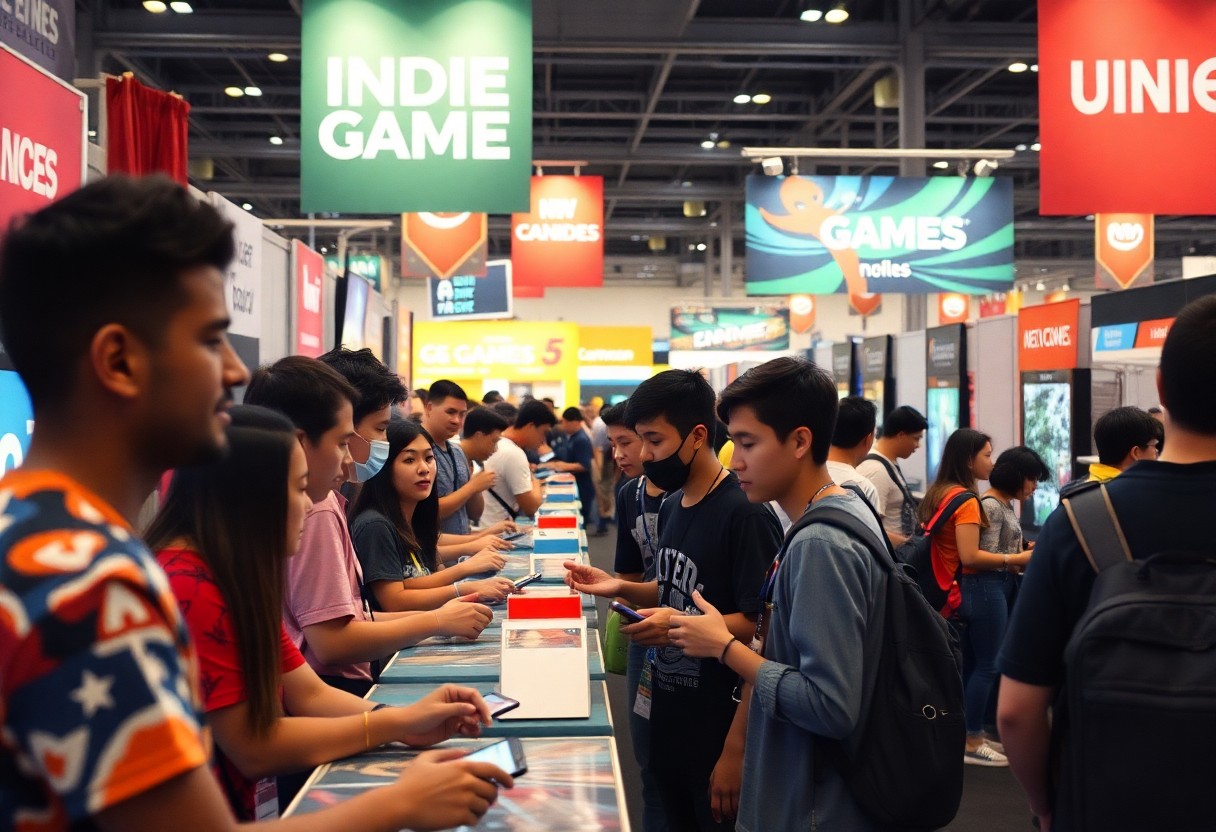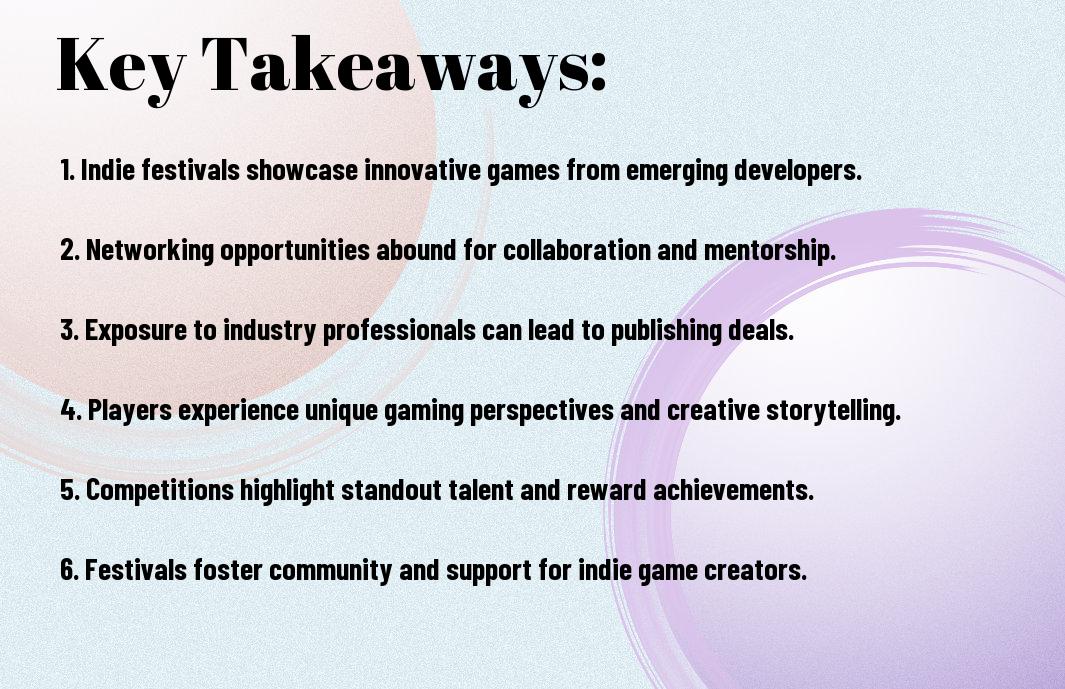As you explore the world of indie games, you’ll notice a shift towards narrative-driven experiences that focus on personal stories. You’re likely to find games that resonate with your emotions, thoughts, and experiences. Your connection to these stories is what sets them apart, and you’ll see how they’re changing the industry’s approach to game development, offering a more intimate and relatable experience that draws you in and leaves a lasting impression.
Key Takeaways:
- Narrative-driven indie games are gaining popularity and changing the way stories are told in the gaming industry, offering unique and personal experiences that resonate with players.
- These games often focus on character development and emotional depth, creating a strong connection between the player and the game’s world, making the experience more immersive and engaging.
- Indie game developers have the freedom to experiment with innovative storytelling methods and push boundaries, resulting in fresh and original narratives that stand out from mainstream games.
- The success of narrative-driven indie games has inspired larger game development studios to incorporate more storytelling elements into their games, leading to a shift in the industry’s approach to game design.
- Personal stories and relatable characters are key elements in narrative-driven indie games, allowing players to reflect on their own experiences and emotions, and fostering a sense of empathy and understanding.
- The rise of narrative-driven indie games has also led to a growing interest in games as a medium for social commentary and critique, tackling complex issues and sparking important conversations.
- The impact of narrative-driven indie games can be seen in the way they are changing the way players interact with games, with many seeking out games that offer a strong narrative focus and emotional resonance, driving the industry towards a more story-centric approach.
The Evolution of Narrative Gaming
The narrative-driven indie game genre has undergone significant transformations over the years, and as you explore this world, you’ll notice a shift towards more personal and immersive storytelling.
From Text Adventures to Visual Novels
Along with the advancement of technology, you’ve seen the rise of various narrative-driven game formats, from text-based adventures to visual novels, which have paved the way for more complex and engaging stories.
Rise of the “Walking Simulator” Genre
At the forefront of this evolution, you’ll find the “walking simulator” genre, which focuses on storytelling and atmosphere over traditional gameplay mechanics, allowing you to experience a more intimate and emotional connection with the game’s narrative.
In addition, as you examine deeper into this genre, you’ll discover that games like What Remains of Edith Finch and Firewatch have pushed the boundaries of storytelling in games, using environmental clues and subtle character interactions to convey their narratives, and you’ll likely find yourself drawn into their rich and immersive worlds.
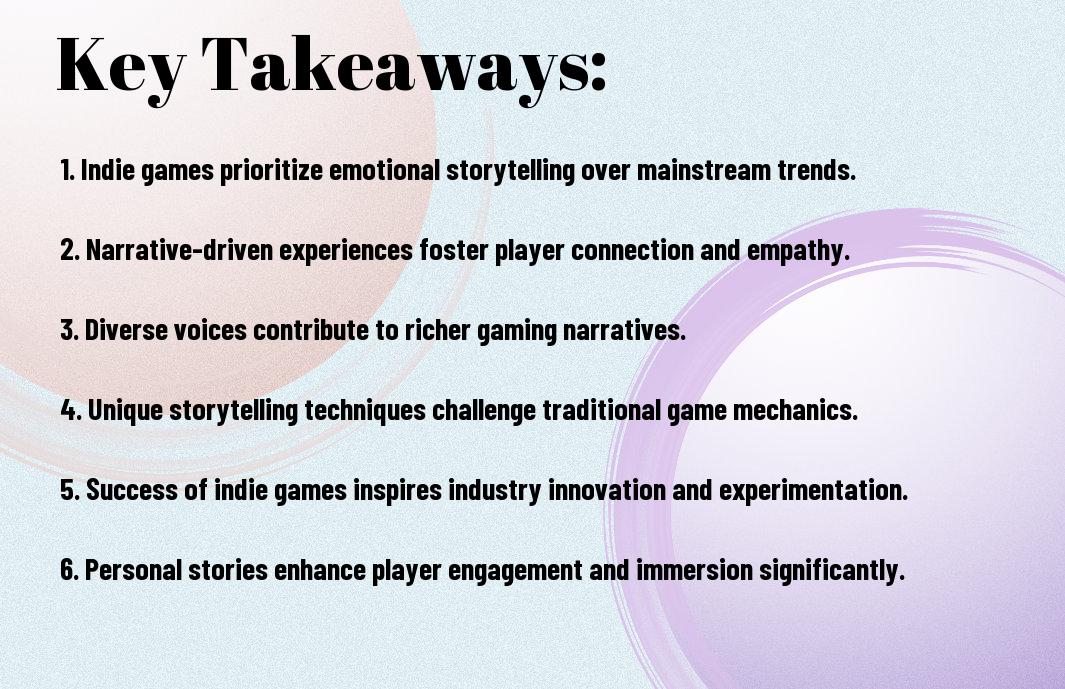

Emotional Storytelling in Indies
Even the most seemingly simple indie games can evoke powerful emotions, as you experience the depth of their narratives. You find yourself invested in the characters and their stories, which can lead to a more personal connection with the game.
Personal Experiences as Game Design
Almost inevitably, your own experiences and emotions influence the games you play, and indie games often incorporate personal experiences into their design. You can see how the developers’ own stories and feelings shape the game’s narrative and atmosphere.
Player Connection Through Intimate Narratives
Along with the rise of indie games, you’ve likely noticed a shift towards more intimate, personal narratives that focus on character development and emotional storytelling. You become more engaged with the game as you relate to the characters and their experiences.
The connection you feel with the characters and their stories is a key aspect of what makes indie games so impactful. As you play, you begin to understand the characters’ motivations and emotions, and you start to see yourself in their struggles and triumphs. This intimate connection is what sets indie games apart, allowing you to experience a deeper level of emotional investment in the game and its narrative.
Design Elements of Story-Driven Indies
After delving into the world of narrative-driven indie games, you’ll notice that design elements play a significant role in shaping your experience. You’ll find that these games often feature simple yet effective mechanics that support the story, drawing you into the narrative.
Minimalist Mechanics Supporting Narrative
Mechanically, these games focus on simplicity, allowing you to engage with the story without unnecessary complexity. You’ll find that the gameplay is often streamlined, making it easy to follow the narrative and become invested in the characters and their struggles.
Environmental Storytelling Techniques
Between the lines of dialogue and action, you’ll discover that environmental storytelling techniques are used to convey the game’s narrative. You’ll notice that the environment is often used to tell the story, with clues and hints scattered throughout the game world.
But as you explore the world of environmental storytelling, you’ll find that it’s not just about the visual elements. You’ll discover that the sound design, lighting, and even the gameplay mechanics all work together to create an immersive experience that draws you into the story, making you feel like you’re an integral part of the narrative. You’ll start to appreciate the attention to detail that goes into creating these environments, and how they enhance your overall experience.
Impact on Mainstream Gaming
Now, as you explore the world of indie games, you’ll notice their influence on mainstream gaming, with many AAA titles incorporating narrative-driven elements, as discussed in Indie Games in the Modern Industry: How a Small Budget Can Lead to Big Success, and you can see how this shift is changing your gaming experience.
Influence on AAA Story Development
Behind the scenes, you’ll find that indie games are pushing the boundaries of storytelling, and you’re likely to see more complex, character-driven narratives in AAA games as a result, which will change the way you engage with your favorite games.
Bridging Gameplay and Narrative
Influence of indie games can be seen in the way they balance gameplay and narrative, and you’ll notice that many games now prioritize storytelling without sacrificing gameplay, creating a more immersive experience for you.
It is interesting to note that as you play these games, you’ll see how the narrative is woven into the gameplay, making your experience more engaging and interactive, and you’ll appreciate the effort that goes into creating such a seamless experience, which is a testament to the impact of indie games on the industry.
Creative Freedom in Indie Development
Many indie game developers are turning to narrative-driven games, allowing you to explore unique stories and gameplay mechanics. You can learn more about this trend at Interactive Storytelling: 5 Innovations Unlocking the Future of Games, which highlights the potential of interactive storytelling in indie games.
Personal Vision vs Market Demands
Above all, you want your game to reflect your personal vision, but you also need to consider market demands, ensuring your game appeals to your target audience and stands out in a crowded market.
Experimental Narrative Approaches
By embracing experimental narrative approaches, you can create innovative and engaging gameplay experiences that set your game apart from others in the industry, allowing you to push the boundaries of what is possible in game development.
For instance, you can experiment with non-linear storytelling, multiple endings, or player choice and consequence, giving you the freedom to craft a unique narrative that resonates with your players and leaves a lasting impression, making your game a memorable experience.
Cultural Significance
For years, the gaming industry has been evolving, and narrative-driven indie games have played a significant role in this transformation, allowing you to experience unique stories that resonate with your emotions and perspectives.
Representation Through Personal Stories
Contrary to traditional gaming norms, these indie games offer you a chance to engage with characters and storylines that reflect your own experiences, making the gaming experience more relatable and immersive.
Social Impact of Narrative Indies
On the surface, narrative-driven indie games may seem like a niche market, but they have a profound impact on your perception of social issues, encouraging you to think critically about the world around you.
Narrative indie games have the power to raise awareness about social issues, such as mental health, diversity, and inequality, allowing you to connect with the stories on a deeper level and potentially influencing your views and attitudes towards these topics, making you more empathetic and open-minded.
Final Words
As a reminder, you have witnessed the impact of narrative-driven indie games on the industry. You see how your emotional investment in personal stories has reshaped the way games are developed. Your connection to these stories has driven innovation, pushing boundaries and redefining the gaming experience. You now expect more from games, and the industry is responding, offering you richer, more immersive experiences that linger long after the credits roll, leaving a lasting impression on your gaming journey.
FAQ
Q: What role do personal stories play in narrative-driven indie games, and how are they impacting the gaming industry?
A: Personal stories in narrative-driven indie games are playing a significant role in reshaping the industry by offering unique, relatable, and often deeply emotional experiences. These games focus on character development, backstory, and player choice, allowing for a level of immersion and connection that traditional games may not provide. As a result, indie games are attracting a diverse audience and influencing mainstream game development by prioritizing storytelling and character depth over purely action-oriented gameplay.
Q: How are indie game developers using narrative-driven storytelling to explore complex themes and issues in their games?
A: Indie game developers are leveraging narrative-driven storytelling to tackle a wide range of complex themes and issues, including mental health, identity, social justice, and personal relationships. By using interactive storytelling, developers can create a safe space for players to engage with these topics in a deeply personal way. This approach not only enhances the gaming experience but also fosters empathy, understanding, and reflection among players. Moreover, the indie scene’s openness to experimentation allows for innovative storytelling methods, such as branching narratives and player-driven outcomes, further enriching the exploration of these themes.
Q: What impact are narrative-driven indie games having on the broader gaming community and the future of game development?
A: Narrative-driven indie games are having a profound impact on the gaming community by challenging traditional genre boundaries and pushing the medium towards more mature and sophisticated storytelling. The success of these games is encouraging larger studios to adopt similar narrative-focused approaches, leading to a shift in the industry’s overall perspective on what makes a game compelling. Furthermore, the community engagement and feedback loops fostered by indie developers are helping to create more inclusive and diverse gaming environments. As the industry continues to evolve, the influence of narrative-driven indie games is expected to grow, leading to a more vibrant, varied, and storytelling-rich gaming landscape.


